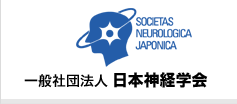- HOME
- Vol.52 No.11
- CLINICA NEUROL, 52: 914−916, 2012
- Vol.52 No.11 contents
Symposium 1
Guillain-Barré and Fisher syndromes: update on the pathophysiological role of antiganglioside antibodies
Kenichi Kaida, M.D.
Division of Neurology, Department of Internal Medicine 3, National Defense Medical College
There are growing experimental and clinical data on the pathophysiological roles of antiganglioside antibodies in Guillain-Barré syndrome (GBS) and Fisher syndrome (FS). Antibodies to a ganglioside complex (GSC) consisting of two different gangliosides are detected in some GBS and FS sera. Recently, anti-GM1/GalNAc-GD1a complex antibodies, anti-GA1/GQ1b antibodies with no reaction against GM1/GQ1b, and anti-GM1/LM1 antibodies have been detected in GBS or FS sera. The anti-GM1/GalNAc-GD1a antibodies correlated with pure motor GBS characterized by antecedent respiratory infection and early CBs at intermediate sites of motor nerves. Complement activation is considered to be a key process causing nerve damage in GBS and FS with antiganglioside antibodies. A recent ex vivo study indicates that antibodies to GM1/GD1a or GM1/GQ1b can induce complementmediated functional and morphological injury at mouse motor nerve terminals. Complement-independent pathophysiology such as blockade of voltage-gated Ca channels, the apoptotic mechanism of neurons, and alteration of microdomains in the nerve cell membrane should also be considered. Complex glycolipid environments in the cell membrane may govern the accessibility and avidity of antiganglioside antibodies for target gangliosides. Thus, the pathogenic effect of antiganglioside antibodies may depend on the local glycolipid environment in the nerve membrane, as well as on the antibody specificity.
Full Text of this Article in Japanese PDF (269K)
(CLINICA NEUROL, 52: 914−916, 2012)
key words: Guillain-Barré syndrome, antiganglioside antibody, ganglioside complex, complement, glycolipid environment
(Received: 23-May-12)


